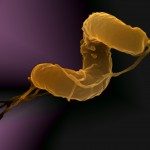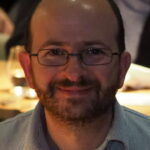Link to Pubmed [PMID] – 39442638
Link to DOI – 10.1016/j.bbi.2024.10.024
Brain Behav Immun 2025 Jan; 123(): 799-812
Peptidoglycan (PGN) is a large complex polymer critical to structure and function of all bacterial species. Intact PGN and its fragments are inflammatory, contributing to infectious and autoimmune disease. Recent studies show that PGN physiologically contributes to immune setpoints, and importantly also to mouse brain development and behavior. However, for the human brain, it remains unknown whether PGN and its fragments differentially gain access to distinct brain regions, which cell types accumulate it, and whether PGN brain load varies with age. Therefore, we investigated human postmortem brain samples of donors with an extensive age range, from newborns to nonagenarians. We examined two monoclonal antibodies against PGN which were validated using dot blot analysis, competition assays and immunofluorescence experiments on bacteria sacculi, which jointly showed specific detection of Gram-positive PGN. As positive reference tissue, brain tissue from sepsis patients, and human liver were used, both showing the expected high PGN levels. In adult brain tissue of different age (34- to 94-year-old) and sex, we detected PGN signals in seven different brain regions, with highest loads in the occipital cortex, hippocampal formation, frontal cortex, the periventricular region and the olfactory bulb. Age-dependent increase of signals was not evident by microscopic observations and only weak correlation was found by statistical analysis in this cohort. PGN was found intracellularly in the cytoplasm surrounding the cell nucleus in astrocytes, oligodendrocytes, neurons, and endothelial cells, but not in macrophages like microglia. PGN was absent in brain tissues of three human newborns (stillbirth to four weeks old). For comparison, three brain regions from non-human primates of varying age (newborn to 21 years) were immunohistochemically stained. The highest PGN-load was observed in brain tissue from 18- to 21-year-old macaques. This first systematic evaluation of PGN in human postmortem brain suggests that PGN accumulates during lifetime until it reaches a plateau by homeostatic turnover and highlights the ubiquitous presence of PGN in human brain tissues, and their ability to participate in physiological as well as pathological processes throughout life.


